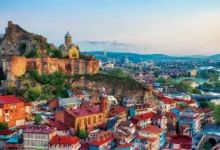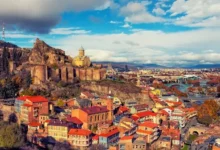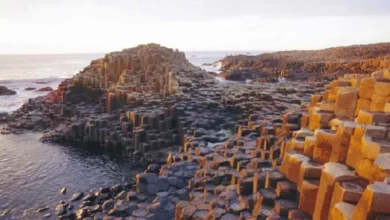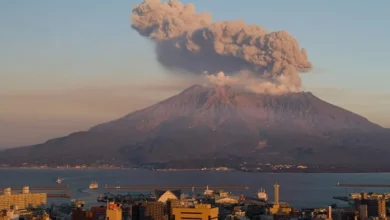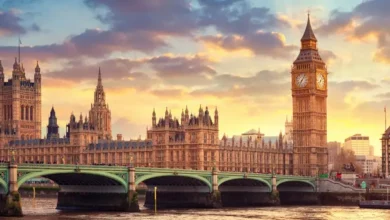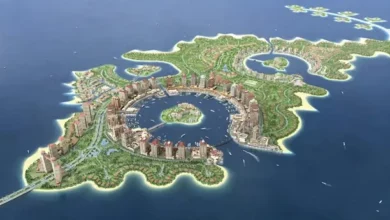Tourist places in Mtskheta, Georgia
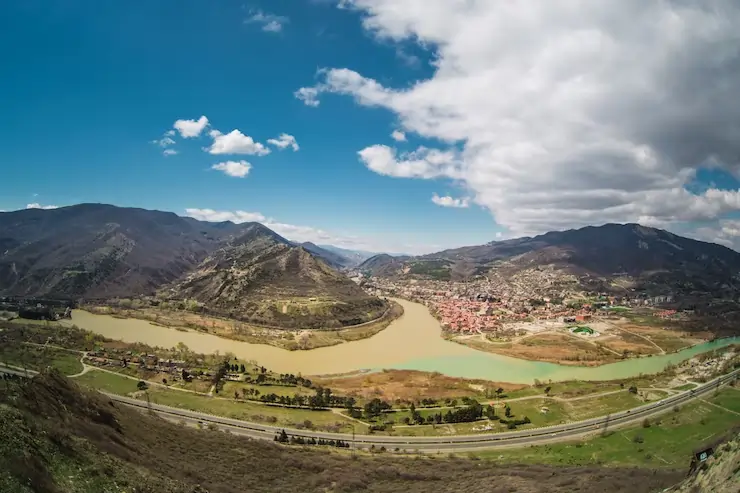
Mtskheta is a UNESCO World Heritage Site.
People lived in this area before 1000 BC, once the capital of the Kingdom of Iberia (Eastern Georgia today).
A city on an ancient trade route is at the confluence of the Mtkvari and Aragvi rivers, twenty kilometers from Tbilisi.
Archaeologists have discovered evidence of Metzakhta’s status as a central trading post. Many perfume bottles, Greek writings, pottery, metal, gold, and jewelry have been found in this area, and many of these examples have been displayed in the city museum.
The great geographer Strabo described this city as developed with a water supply system, markets, and many stone houses.
Mtskheta was the religious center of the country, with several shrines. Although the capital was moved to Tbilisi in the 6th century, this city still has its attractions and is the burial place of Georgian kings.
Today, this lovely old town conveys a feeling of oldness to people.
Top 10 tourist attractions in Mtskheta

Svetitskhoveli Cathedral
Dating back to the 11th century, this Georgian masterpiece has been the country’s religious center for hundreds of years.
The complex includes a church, a gate, a bell tower, castles, and a priest’s residence.
Christ and Elijah, the Prophet’s robes, are preserved in Svetitskhoveli Cathedral.
The tomb of the founder of Tbilisi, King Vakhtang Gorgasali, is inside the building.
The cathedral is included in the UNESCO World Heritage List.
Saint Nino Monastery
This complex is located in the center of Mtskheta city and dates back to the 11th century.
Saint Nino of Cappadocia preached from this holy place to the people of Georgia. The first Christian king Mirian, Queen Nana, and the Assyrian father, Abibos Nekreseli, are all buried here.
The complex includes the cathedral, the church of Saint Nino, a bell tower, and a citadel wall.
Mtsakhta Archaeological Museum
This preserved museum contains national and international archaeological works.
A wide range of works related to the Bronze Age and the late Middle Ages and various ethnographic pieces are also displayed in this museum.
Bebristsikhe Castle
Bebristsikhe castle is located north of Mtsakhta and on the right bank of the Aragoi River.
This castle was called BELTA in ancient times. Bebristsikhe castle was built in ancient times, and its total area is equal to 1500 square meters, and the inner courtyard is about 600 square meters.
Jvari Monastery
The Georgian Orthodox monastery is built on a hill opposite Mtsakhta and at the confluence of the Aragvi and Mtkvari rivers.
Shortly after adopting Christianity, King Mirian III built a substantial wooden passage in this location. In the second half of the 6th century, Guaram, ruler of Kartli, built a chapel next to the Holy Cross. This church is registered on the UNESCO World Heritage List.
Armaztsikhe
This archaeological and historical monument is located along the Mtsakhta-Tbilisi highway.
The name of this building is related to the Armazi idol, which was declared a great god by King Parnavaz.
Archaeological finds in the territory of Armaztsikhe include parts of the wall, towers, the structure of the royal family’s residence, and the ruins of the burial vault. Local people know this building as Bagineti.
Armani Castle
Armani is one of the most important castles in this country in age and size.
Currently, the remains of this castle occupy 30 hectares of this area. This fort was used to control the roads.
Shio-Mgvime Monastery
This monastery is 8 km from Mtsakhta and on the left bank of the Mtkvari River.
This building was built in the second half of the 6th century by an Assyrian father named Shio.
The complex includes facilities from different˟ periods, including a cave church, St. John the Baptist Church, a bell tower, Shio Church, St. Mary’s Cathedral with towers, caves, a dining hall, water tanks, clergy houses, and the Ascension Church. Cited.
Zedazeni
This complex is located 6 km south of Saguramo village on top of a mountain covered in deep forests.
This complex includes the church of St. John the Baptist, the castle, and the monastic cave cells.
Ilia Chavchavadze Saguramo State Museum
The museum complex includes the residence, auxiliary building, and vineyards of the family of the famous Georgian writer.
In this museum, memorial items and manuscripts of the author, photo portraits of famous Georgian figures of the 19th century, and photographs related to that time are kept.

